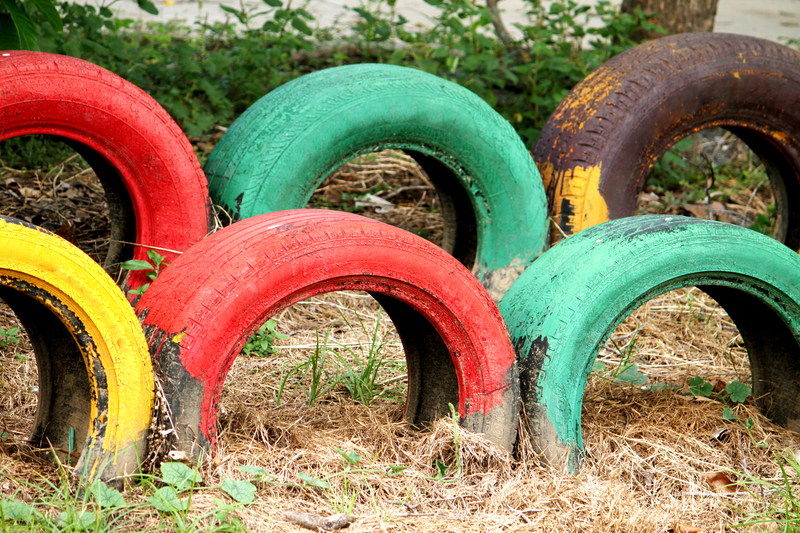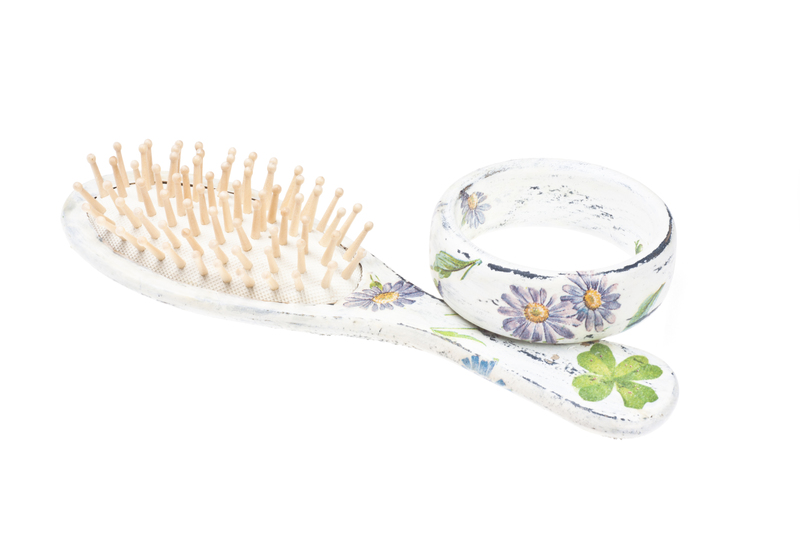Keeping Clutter at Bay: Tips for Long-Term Organization
Posted on 26/08/2025
Keeping Clutter at Bay: Tips for Long-Term Organization
Clutter can stealthily invade even the neatest of spaces, making our homes and workplaces feel chaotic and overwhelming. If you've ever felt like tidying up is a never-ending battle, you're not alone. But with effective strategies for long-term organization, it's possible to keep clutter at bay--not just for days or weeks, but for the long haul. In this comprehensive article, we'll explore actionable, Google-friendly and practical tips to create and maintain clutter-free spaces.

Why Is Long-Term Organization Important?
Studies have shown that physical clutter is closely linked to stress, anxiety, and decreased productivity. A well-organized environment, on the other hand, encourages calmness, creativity, and focus. Long-term organization isn't just about tidying up once; it's about establishing habits and systems that sustain order every day.
- Boosts mental clarity and reduces stress
- Saves time and increases productivity
- Fosters a healthier living and work environment
- Makes it easier to find and access items you need
Understanding the Causes of Clutter
Before diving into solutions, it's crucial to understand why clutter accumulates in the first place. Often, it's the result of emotional attachments, lack of organization systems, or simply having too much stuff. Addressing the underlying causes helps prevent clutter from returning.
Common Reasons for Clutter:
- Impulse shopping and keeping unnecessary items
- Inadequate storage solutions
- Lack of regular decluttering habits
- Emotional attachment to possessions
Decluttering for a Fresh Start
The first step in keeping clutter at bay is to declutter thoroughly. This means reassessing your belongings and letting go of items that no longer serve a purpose.
Effective Decluttering Strategies
- The Four-Box Method: Label four boxes as Keep, Donate, Sell, Trash and sort items accordingly.
- The KonMari Technique: Keep only those items that Spark Joy in your life.
- Room-by-Room Approach: Focus on one space at a time to avoid feeling overwhelmed.
- Set a Timer: Declutter in short bursts (like 20 minutes) daily for ongoing progress.
Creating Systems for Long-Term Organization
Once you've decluttered, it's time to put systems in place that will keep your environment organized. The secret to long-term organization is making sure every item has a designated home and that maintaining order becomes part of your routine.
Implement Smart Storage Solutions
- Use vertical space: Install shelves, hooks, and hanging organizers to maximize storage.
- Clear storage bins: Transparent containers help you easily identify items and reduce visual clutter.
- Drawer dividers: Keep small items organized in desks, dressers, and kitchen drawers.
- Label everything: Clearly mark storage bins, shelves, and drawers for easy retrieval and return of items.
Adopt Consistent Habits
- One In, One Out Rule: For every new item brought into your space, remove an existing one.
- Daily reset: Spend five to ten minutes each evening putting things back in their place.
- Regular reviews: Schedule monthly decluttering sessions to keep on top of accumulating items.
Room-by-Room Organization Tips
Organizing the Kitchen
- Pantry purge: Remove expired food and organize similar items together.
- Drawer organizers: Use trays to keep utensils sorted.
- Vertical racks: Stack baking sheets and cutting boards to free up space.
Tidying the Bedroom
- Under-bed storage: Utilize bins for out-of-season clothing or spare bedding.
- Closet systems: Add extra shelving or hanging organizers for shoes and accessories.
- Nightstand essentials: Keep the surface clear, allowing only frequently used items.
Maintaining an Organized Living Room
- Multifunctional furniture: Opt for ottomans or coffee tables with hidden storage.
- Entertainment center: Invest in modular units to store electronics, books, and games.
- Basket strategy: Place baskets for daily items like remotes or children's toys.
Organizing the Bathroom
- Medicine cabinet clear-out: Regularly dispose of expired products.
- Tiered shelving: Make use of vertical space for towels, toiletries, and cleaning supplies.
- Small bins or trays: Keep drawers neat and categorized.
De-Cluttering the Home Office
- Paper management: Use folders, binders, or a digitizing system for documents.
- Cable management: Employ cable boxes or clips to minimize tangles.
- Desktop zones: Assign areas for incoming work, reference materials, and office supplies.
Digital Organization for a Clutter-Free Life
Physical clutter isn't the only problem--digital clutter can be just as overwhelming. To truly keep clutter at bay long-term, apply similar organization principles to your digital devices:
- Email inbox zero: Unsubscribe from unwanted newsletters and delete old emails.
- File folders: Create a clear folder structure for documents, photos, and downloads.
- Desktop clean-up: Remove unused shortcuts and organize files weekly.
- Backup regularly: Use cloud storage or external drives to save important data.
Involving the Whole Household or Team
It's easier to maintain long-term organization when everyone is on board, whether at home or in the office. Encourage good organization habits by setting clear expectations and roles.
- Assign responsibilities: Give each household member or teammate a specific area to keep tidy.
- Shared calendars: Schedule regular cleaning or organizing sessions together.
- Use positive reinforcement: Celebrate successes to keep everyone motivated.
Organization Tools and Resources
Investing in the right tools can make long-term clutter control easier and even enjoyable. Here are some essentials to support your organization journey:
- Storage bins and baskets: Versatile, stackable, and easy to label.
- Wall-mounted hooks and racks: Great for coats, bags, and accessories.
- Shelving units: Customizable and space-efficient for any room.
- Digital apps: Organizational apps like Trello, Notion, or Google Keep help manage tasks and reminders.
Preventing Clutter from Creeping Back
One of the most important aspects of keeping clutter at bay is preventing it from returning. This requires ongoing attention and a willingness to adjust as your needs change.
Signs Clutter Is Returning
- Surfaces become dumping grounds for miscellaneous items
- Drawers and closets are difficult to open or overfilled
- Difficulty locating important items quickly
Quick Intervention Tips
- Address the "hot spots": Daily, tackle areas where clutter accumulates most, like entryways or kitchen counters.
- Adapt your system: Don't be afraid to tweak storage solutions if something isn't working.
- Stay mindful: Before acquiring something new, ask yourself if you truly need it and have space for it.
Long-Term Organization Myths Debunked
- Myth: Organization is a one-time event.
Fact: It's an ongoing process requiring regular maintenance. - Myth: You need to be naturally tidy.
Fact: Anyone can learn and practice effective organization skills. - Myth: It's expensive to stay organized.
Fact: Many solutions can be implemented with what you already own or using budget-friendly tools.
Final Thoughts: Making Organization a Way of Life
Long-term organization is not about becoming a perfectionist or living in a magazine-ready home. It's about fostering intentional habits, routines, and systems that reduce stress and help you focus on what truly matters.
Start small, be patient with yourself, and remember: Keeping clutter at bay is a journey, not a destination. Over time, maintaining an organized and welcoming space will become second nature--and you'll reap the many rewards of a clutter-free life.

Frequently Asked Questions About Long-Term Clutter Control
How often should I declutter?
It's best to declutter seasonally or at least every three to six months. Regular mini-sessions--like a quick weekly tidy-up--can help maintain your organized space between bigger overhauls.
What if I have emotional ties to items?
It's normal to feel attached to possessions. Start by letting go of items with the least emotional value. If something holds sentimental worth, consider taking a photo as a memory, or limiting yourself to a designated memory box.
Are there professional organizers who can help?
Yes! Many people find it beneficial to hire a certified professional organizer for guidance. These experts can help create personalized systems for long-lasting clutter control that suit your lifestyle.
How do I manage clutter with children or pets?
Organization with children or pets requires flexibility. Use labeled bins, accessible shelves, and simple routines to encourage kids to participate. With pets, regularly reassess toys and supplies, and keep essentials in designated areas.
Your Clutter-Free Future Starts Today
By applying these practical, Google-friendly tips for lasting organization and developing sustainable habits, anyone can keep clutter at bay long-term. Start with one space, one habit, or one new system--and watch as your organized, clutter-free life grows.
Remember: Organization is a lifelong practice, but the relief, comfort, and productivity you'll gain are well worth the effort.

 020 3409 4688
020 3409 4688 020 3409 4688
020 3409 4688




 House clearance
House clearance Waste Removal
Waste Removal Here at Rubbish Collection we offer an efficient and affordable house clearance at the best price. We can perform full domestic clearance in London, removing...
Here at Rubbish Collection we offer an efficient and affordable house clearance at the best price. We can perform full domestic clearance in London, removing... Waste can accumulate quickly and before you know it, it’s everywhere and taking up lots of space. If you would like it professionally removed, hire Rubbish Collection for the...
Waste can accumulate quickly and before you know it, it’s everywhere and taking up lots of space. If you would like it professionally removed, hire Rubbish Collection for the...





